The Distribution of Albino Green Keelback
(Macropisthodon plumbicolor) Family: Colubridae
Introduction: Satara is district of Maharashtra and part of Western Ghats. Satara is located in the heart of West Maharashtra and in the middle of districts of Pune, Sangli, Miraj, Solapur and Kolhapur; Satara district is famous for hill stations including Kaas, Thoseghar, Vasota, Mahabaleshwar and Panchgani and for a range of forts. Satara has various types of habitation and very massive biodiversity.
Satara is currently on the tip of wild life researchers, many species From Flora and fauna have been recorded from Satara.
General info of The Green Keelback (Macropisthodon plumbicolor):
Distribution:
The Green Keelback (Macropisthodon plumbicolor) is widely distributed snake found in parts of Asia.
Structure:
The body structure of Green Keelback is rounded. Eye fairly large and the rostral scale is just visible from above. The sutures between the internasals are as long as that between the prefrontals or a little shorter. The frontal scale is as long as its distance from the end of the snout or a little longer, as long as the parietals or a little shorter; the loreal scale is as long as deep or deeper, sometimes touching the eye; two preoculars scales and three or four postoculars; the temporals are 2 + 3 or 4; supralabials 7, the third and fourth touch the eye; 4 or 5 lower labials in contact with the anterior chin-shields, which are shorter than the posterior. The dorsal scales are strongly keeled, in 23 to 27 rows. The ventral scales are 144-160 and the anal scale is usually divided; the subcaudals scales are 35-50.
Colour:
Dull green above, uniform or with traces of black markings. Young specimens show an inverted black V-mark on the neck, its apex forwards, reaching to the frontal shield, and a second much smaller one behind, the intervening space being bright yellow or orange; a black stripe from the eye to the angle of the mouth, and more or less regular transverse spots or cross-bars on the back and tail; belly whitish, yellow or plumbeous, rarely with darkish spots. This pattern disappears after 30 or 36 months which is maturity period of this snake. This is non aggressive snake but when being disturbed it may flatten the neck and raise the head like a cobra while others may flatten the entire body on the ground.
Naturally feeds on toads. (Captive snakes feed on Geckos, frogs and Lizards)
Albinism in Snake:
Albino snakes are born with a genetic abnormality known as albinism, which is a lack of pigmentation in the body and eyes. This leads to snake to be developed in white color, or may be lack of a particular coloration that is typical, for example an albino is usually yellow, white, and red. Albinism also typically causes a snake’s eye to be solid red in color and may reduce the snake’s eyesight. Albino snakes do not belong to a particular species of snake, but can be of various types that are born without the usual pigmentation seen in the species. This can be caused by genetic mutation. An albino snake is typically identifiable by the distinctive red eyes and light coloration.
Reported locations of Albino snakes from Maharashtra and Goa:
Observation: All the species were observed in human habitations near scrub jungle in Satara District at a distance of about 5 km from Satara city on the basis of rescue calls. It is a hilly area. 
1st specimen of Green Keelback (Macropisthodon plumbicolor) (female 79.2 cm) was observed on 7th July 2007, upper body was entirely yellow belly pinkish white, eyes was Red and pink tongue.
2nd specimen (female 54.8 cm) was found on 22nd May 2009.
The 3rd Specimen (juvenile) was found on 21st June 2012 (Male 39.6 cm) body fetchers was same like adult albino all markings was absent which normally found on Young Macropisthodon plumbicolor, all specimens were healthy and active.
We have taken some vision tests between normal Green Keelback and albino Green keelback and we got nice record of vision. The normal Green Keelback snake (non-albino) can see trembling movements from 8 feet but an albino has less vision than Normal one.
Mostly albinos come out in the night time and placing these albino specimen in sun light makes them extremely disturbed.
Discussion:
Albinism has been reported in Lions, Tigers, Zebras, Monkeys, cats, penguins, deers, Crocodiles, Peafowls, squirrels, snakes, dolphins and sharks among others. Albinism can affect animals, birds, fish and humans too. It is a congenital disorder that causes a partial or complete absence of pigmentation of the skin, eyes and hair. Those who are affected by albinism lack the pigment melanin that is responsible for the color of the skin, eyes and hair. In case of albinos, an enzyme involved in melanin production will be absent or defective. This results in absence of melanin in the body, thereby causing albinism. This condition is mostly acquired from both parents, but, in some cases, it can be inherited from a single parent. It may also happen that non-albino parents get an albino offspring. This is because of the fact that the parents are carriers of the genes that cause this condition.
There is no record of albinism in captive Green Keelback (Macropisthodon plumbicolor). Since two of the three albino specimens had reached adulthood it is obvious that the albino Macropisthodon plumbicolor is able to catch prey and survive.
Though the exact reason for the occurrence of Macropisthodon plumbicolor in Satara is yet to be ascertained, since we have observed three albino specimens of the Green Keelback (Macropisthodon plumbicolor) it can be concluded that Green Keelback (Macropisthodon plumbicolor) of this particular area of Satara district are carriers of the genes causing albinism. This record makes conformation of natural breeding occurrence among these snakes with genetic predisposition.
Acknowledgment:
I am grateful to Mr.R R Ohol sir, Mr. Anilkumar khire, Mr.Krushna Ghule, Mr. Alexander, Kiran Aahire, Avinash Pawar, Janardan Babar, Aman Adsul, Deepak More, Santosh chawan all the members of Wildlife Protection and Research Society Satara Maharashtra, and Forest Department of Satara.
References:
* Cantor, T. E. 1839 Spicilegium serpentium indicorum [parts 1 and 2]. Proc. Zool. Soc. London, 7: 31-34, 49- 55.
* Jerdon, T.C. 1853 Catalogue of the Reptiles inhabiting the Peninsula of India. Part 2. J. Asiat. Soc. Bengal xxii: 522-534 [1853]
* Mattison, Chris (1999). Snake. DK Publishing. ISBN 0-7894-4660-X.
*“The Nelson’s Milksnake, Lampropeltis triangulum nelsoni”. Retrieved 2007-06-24.
* “Nelson’s Milk Snake”. Applegate Reptiles. Retrieved 2007-06-24.
* Amit Sayyed, 2008 “Amazing Creature of the Earth” [31-35] Please post your views about this article on the Albino Green Keelback snake in the comments below.
Please post your views about the article ‘Albino Keelback Snake’ in the comments below.
- Malabar Gliding Frog – Nesting behaviour and development stages - 20 November,2013
- The Distribution of Albino Green Keelback - 23 July,2012

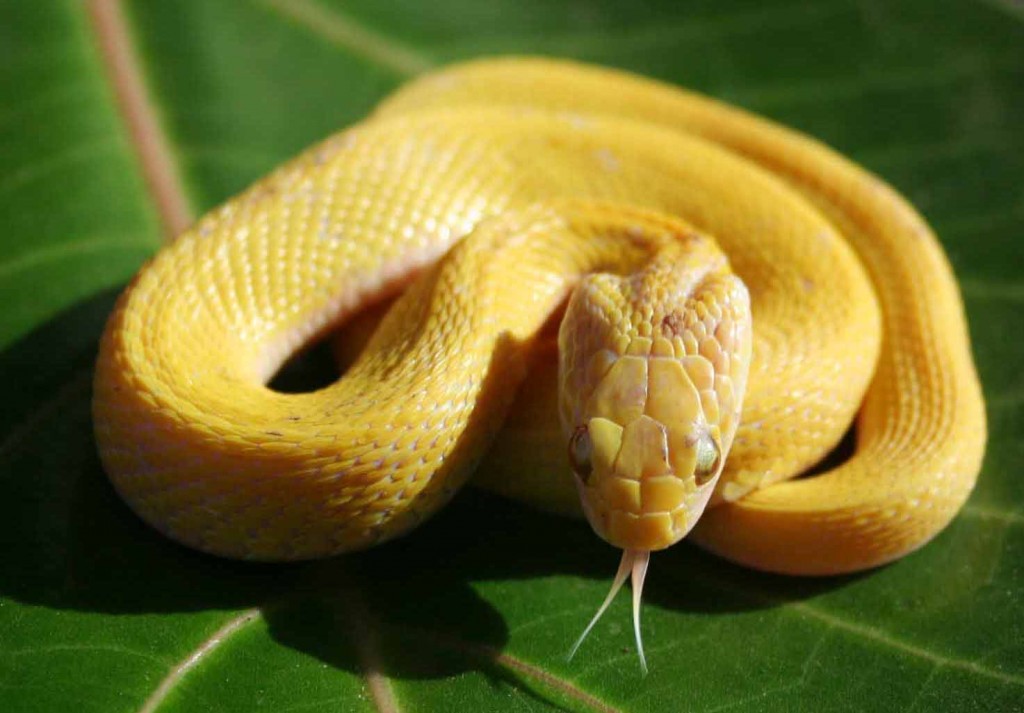

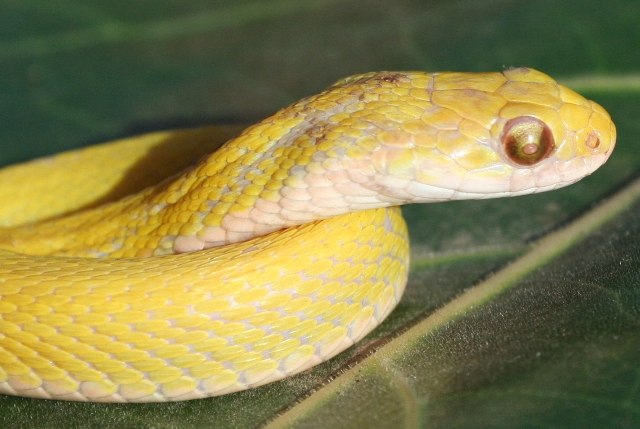

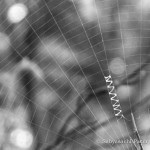
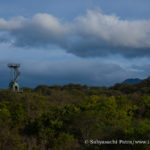


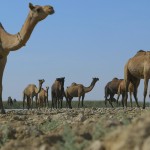



Thanks for sharing such a lovely and informative post…….
Informative and interesting. Cheers!
That was an interesting blog. I have heard of albino peacocks…but never heard of albino reptiles…mindblowing! In fact, these look even more creepy–ewww!
Thanks for sharing, indiawilds!
Those snakes gives me the shivers. They are scary.
Very informative article. And the photographs are superb ! Thanks for sharing.
nice pic. Had seen them in KL
Beautiful blog with amazing photos!
I’ve never seen a snake which is in mango yellow color…Lovely shots!
Informative article…like very much